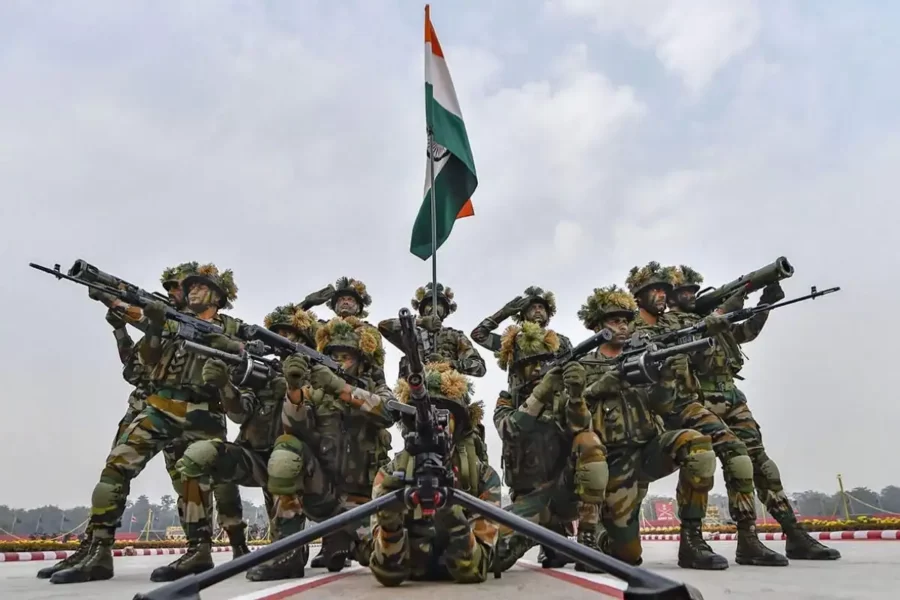While the hiring process halted for two years due to the pandemic, a downsizing of the Indian army would lead to severe joblessness.
However, analysts believe that PM Modi’s government may seek other methods to downsize the Indian army.
Furthermore, after the US and China, India is the world’s third-largest military spender. India is also the world’s second-largest importer of arms.
Lt-Gen HS Panag believes the current shortage of over 100,000 personnel is an opportunity for reform.
Is this the right time to begin the downsizing of the Indian army?
Anit Mukherjee of S Rajaratnam School of International Studies in Singapore said, “a hiring freeze at a time when you have unsettled borders across demanding terrain could adversely impact manpower availability in immediate terms.”
India shares hostile borders with China and Pakistan and needs to be prepared to fight two land wars simultaneously.
Given the rising tension on India’s borders, tens of thousands of troops hang between the disputed Himalayan border with China.
Indian-administered Kashmir has nearly half a million permanent troops.
Furthermore, the persistent threat of attack from across the border is a constant cause for concern.
However, India reserves an ample stockpile of nuclear warheads and ballistic missiles.
Will the downsizing of the Indian army have a positive impact?
As per a recent report, quoting sources in the defence department say, the government is contemplating a proposal to hire soldiers for a fixed term.
The term is known as the “three-year-tour of duty.”
As PM Narendra Modi advocates this reform, he mentioned in the past the “need for forces that are agile, mobile and driven by technology, not just human valour,”
He further said that India needs capabilities to “win swift wars, for we will not have the luxury of long drawn battles.”
Former officer and now defence writer Ajai Shukla says, “the army has the ability to make do with much less people than they have now. We need to cut the flab.”
Furthermore, Lt-Gen Panag notes, “the forces of the 21st Century require quick responses by agile armed forces backed by state-of-the-art military technology-more so in the subcontinental context, where nuclear weapons preclude large-scale conventional wars.”
He said India has a “large military where we are forced to use quantity to compensate for quality.”
As a developing economy, India’s defence spending “cannot increase exponentially” and therefore it needed to slim the forces.
What does the “tour of duty” proposal entail?
Mr. Anit Mukherjee believes the “tour of duty” proposal favors assumptions on sign-up motivation and “more seriously threatens to weaken the army by replacing professional soldiers with short-term, transient soldiers.”
Senior fellow Sushant Singh at the Centre for Policy Research, a Delhi-based think tank, said the “tour of duty” proposal made him uncomfortable.
He says, “do you really want to put out so many people who are well trained in arms to look for jobs in a society where levels of violence are already so high?”
“Do you want these ex-soldiers serving in the police and or as security guards?”
“My fear is, you can end up creating militias of unemployed arms-trained men.”
He further says, “there seems to be no strategy or plan that has been made public. This is reform by stealth.”
It is due to critics like Mr. Singh who help raise questions like:
What about the gaps that will be created that won’t be filled for years? How fast can you train the new “transient” recruits?
What about the political pushback that will inevitably happen as public protests demanding the resumption of hiring continues?
Most importantly, which roles will be trimmed? The soldier who operates an air defence gun or the soldier looking for rations?
Lastly,
The downsizing of the Indian army may not seem particularly like the right move. A hiring freeze or new reform could negatively impact the Indian army, given the current hostile borders.
Also Read – FinMin: India struggles with slow growth and high inflation

1 Comment